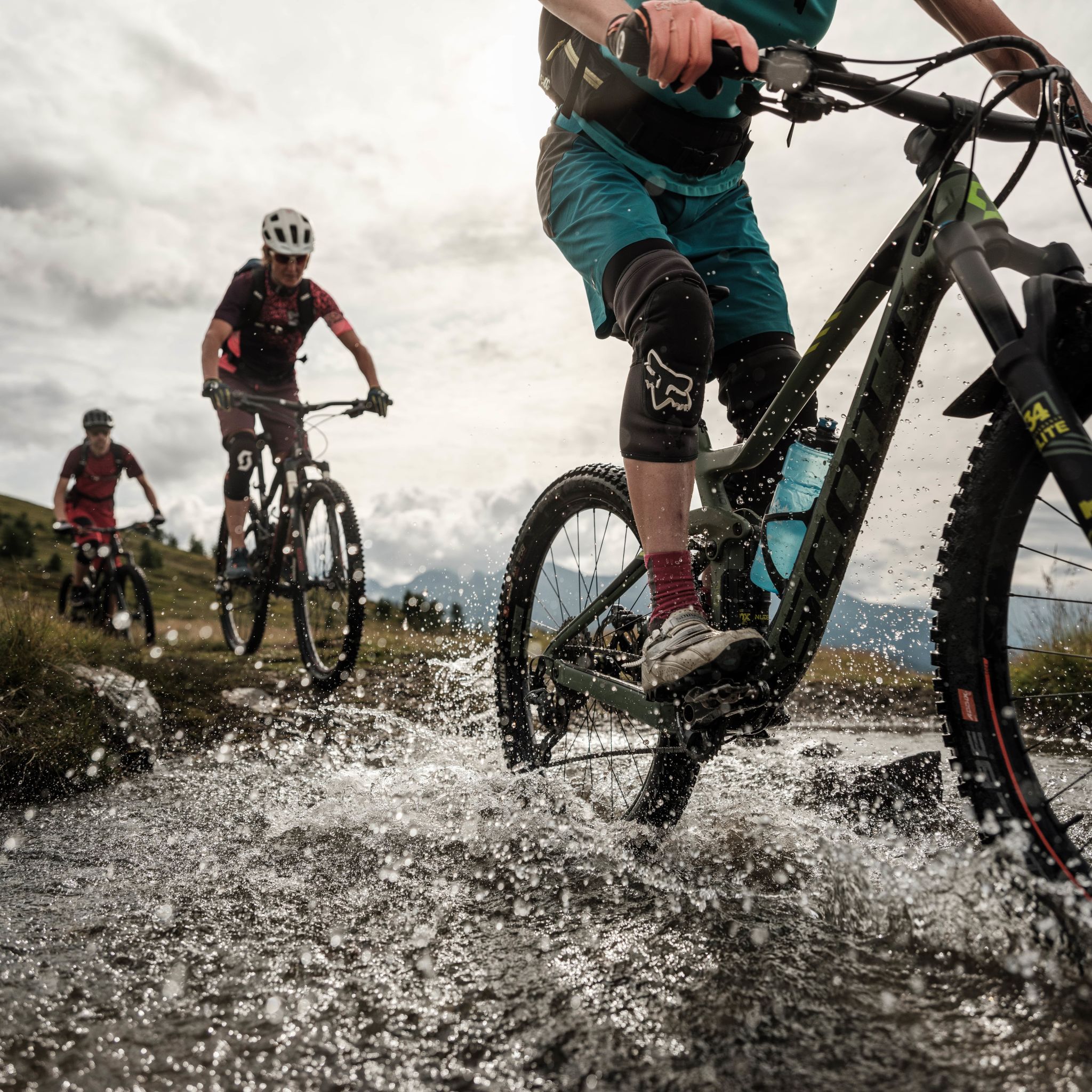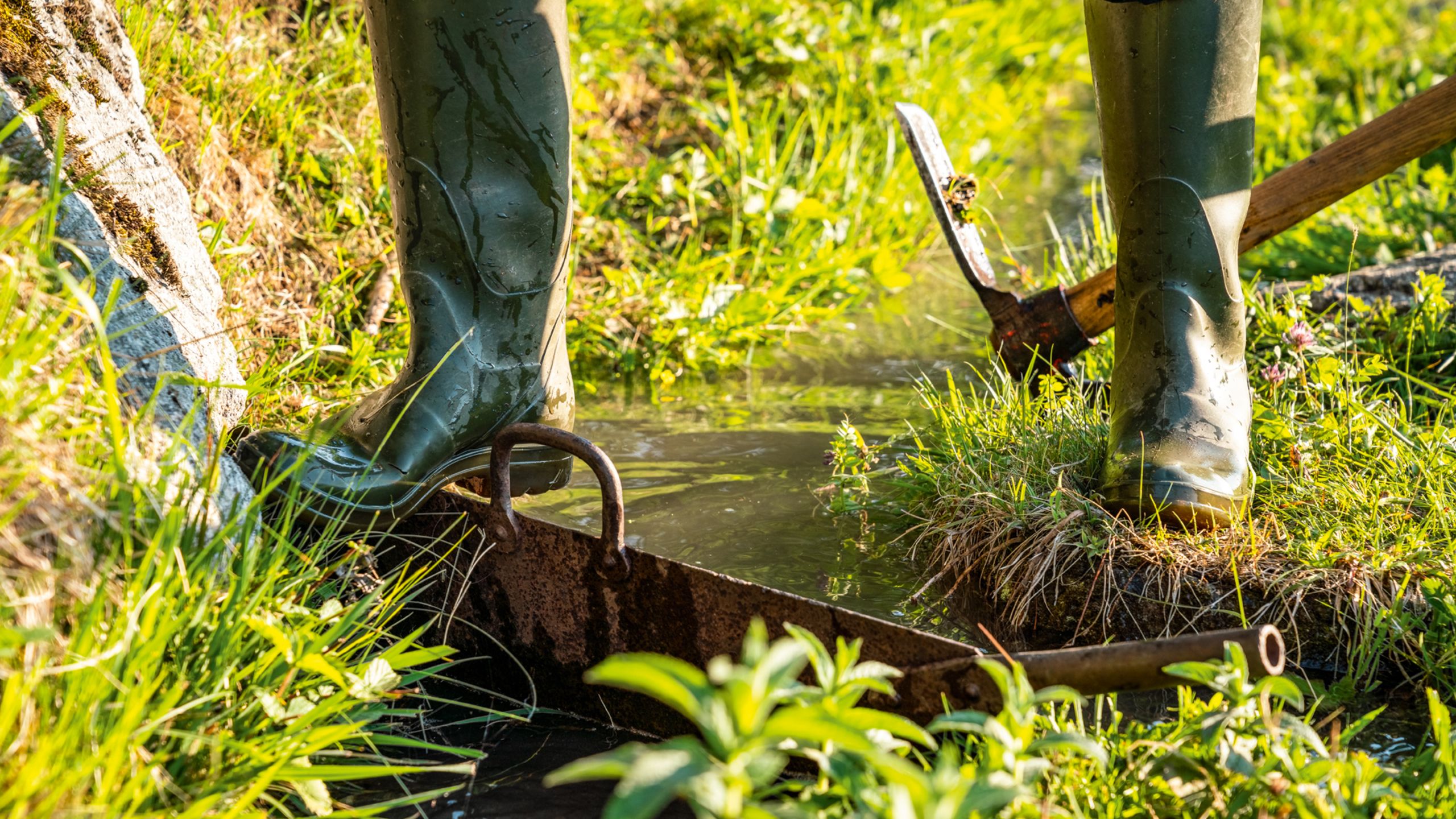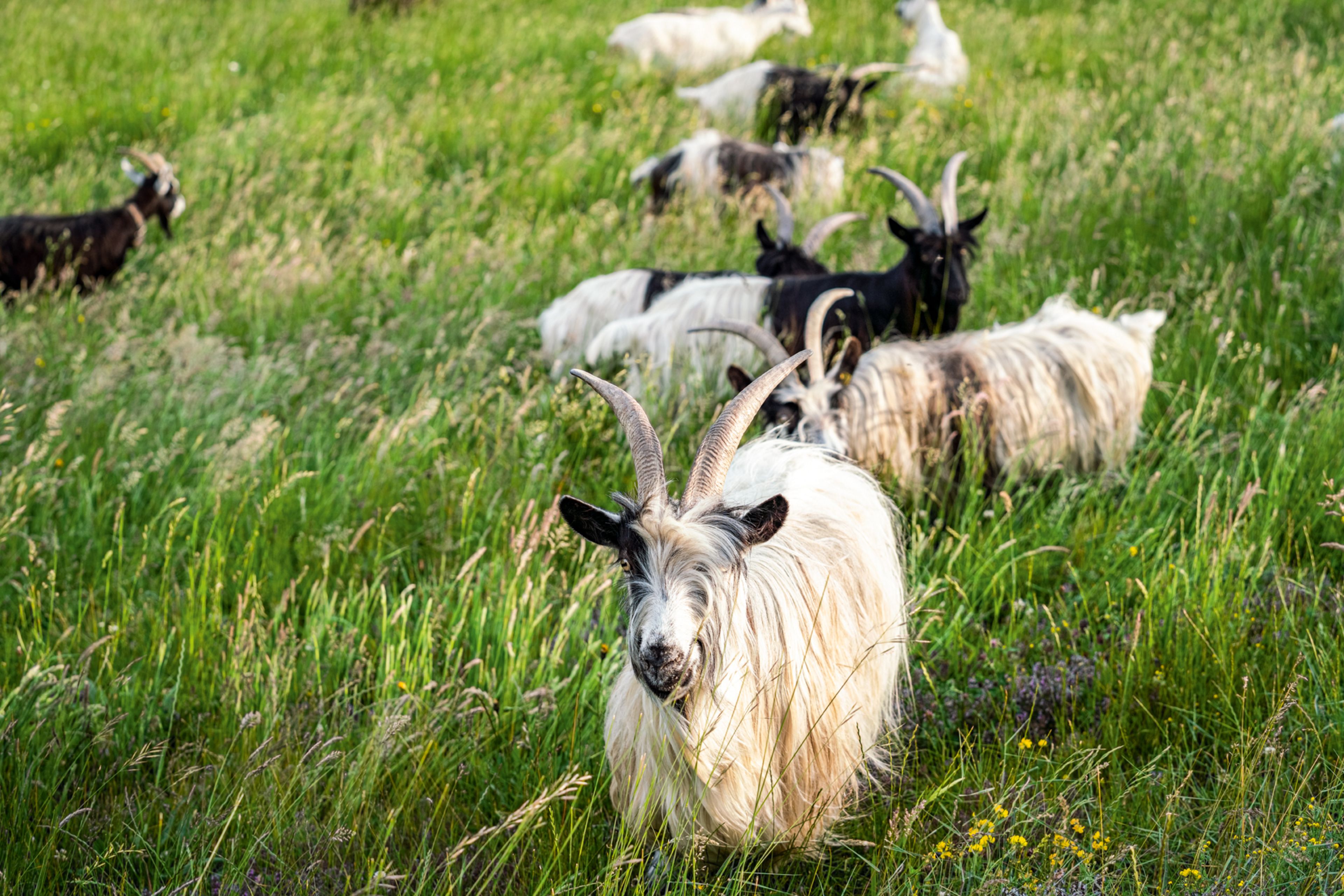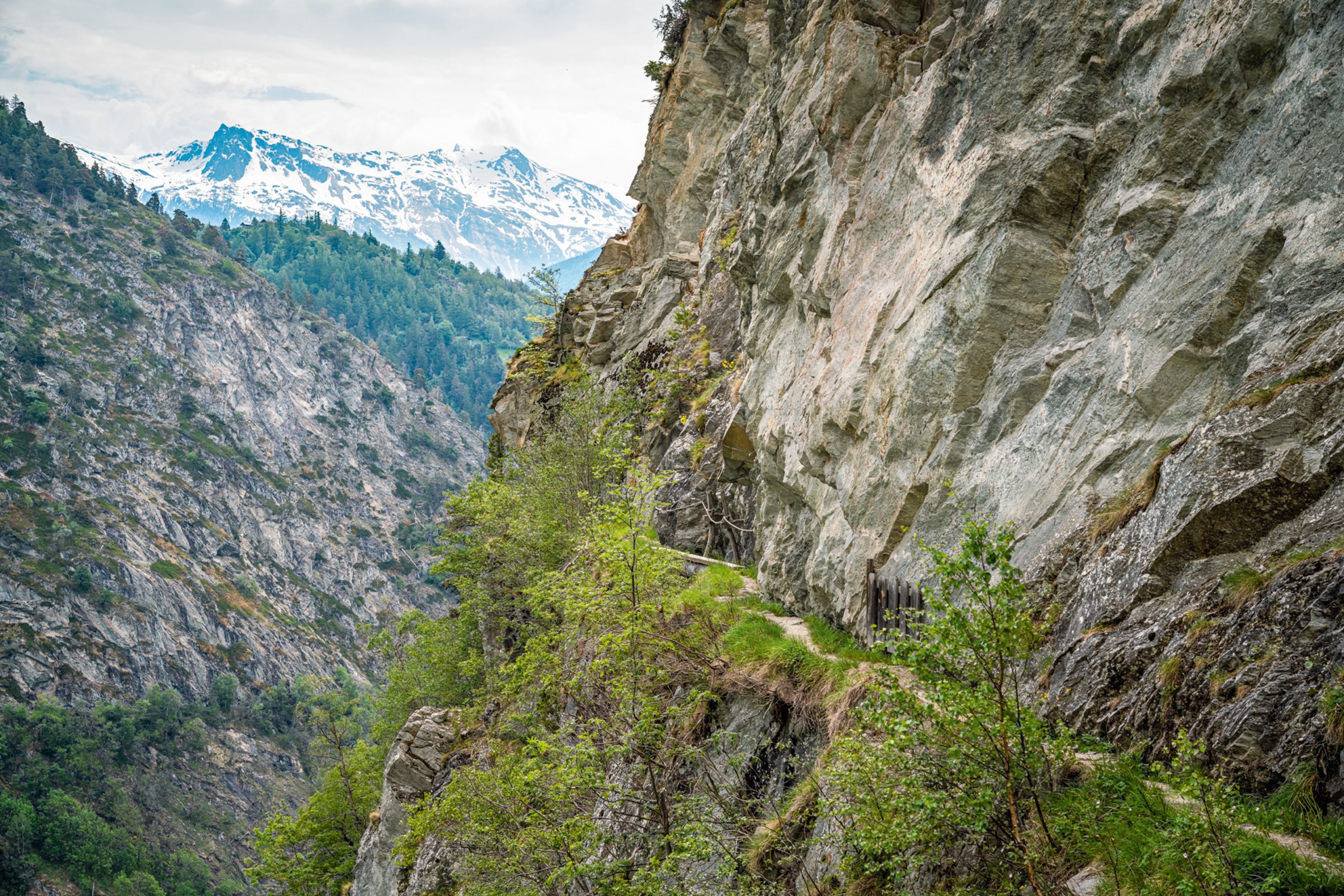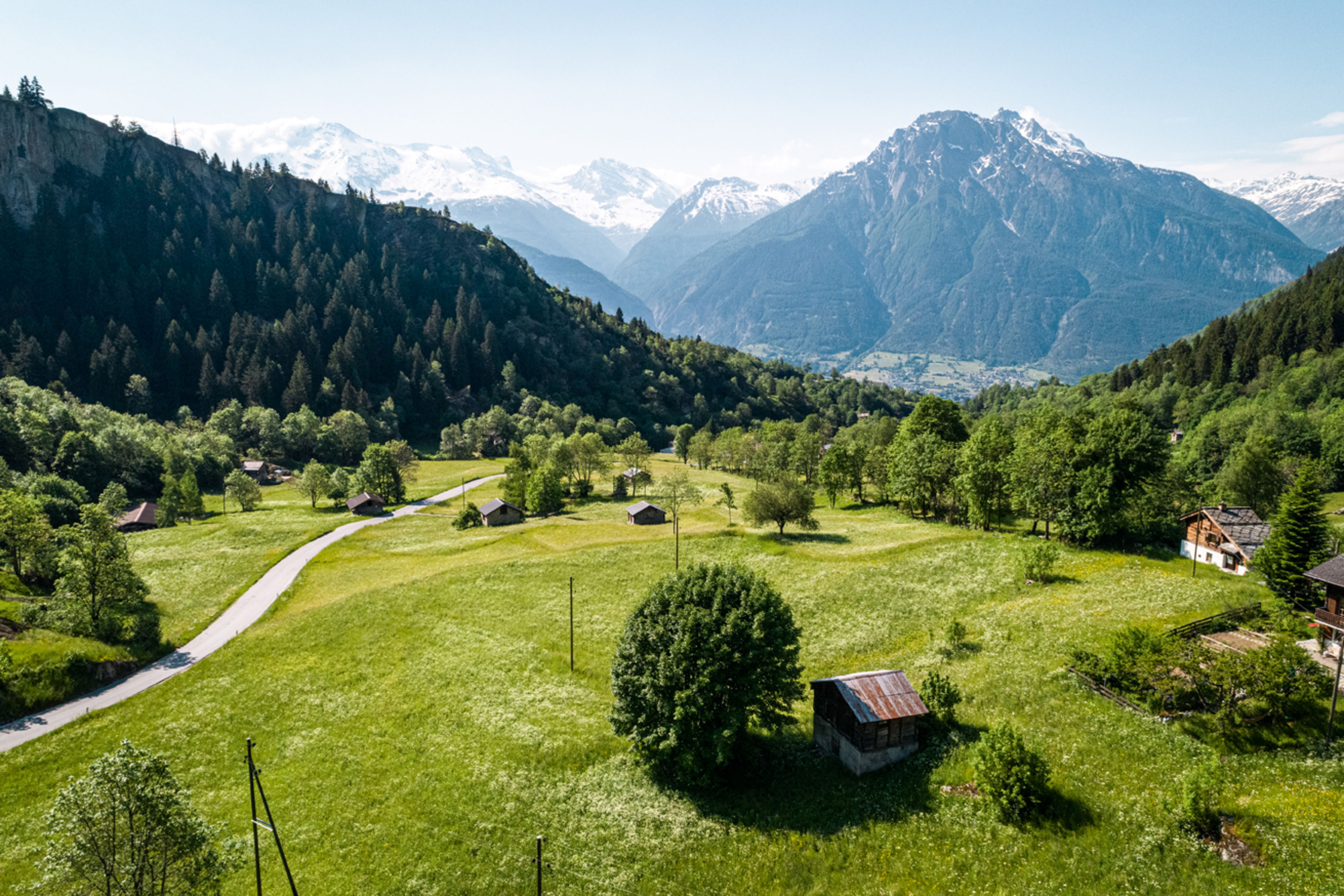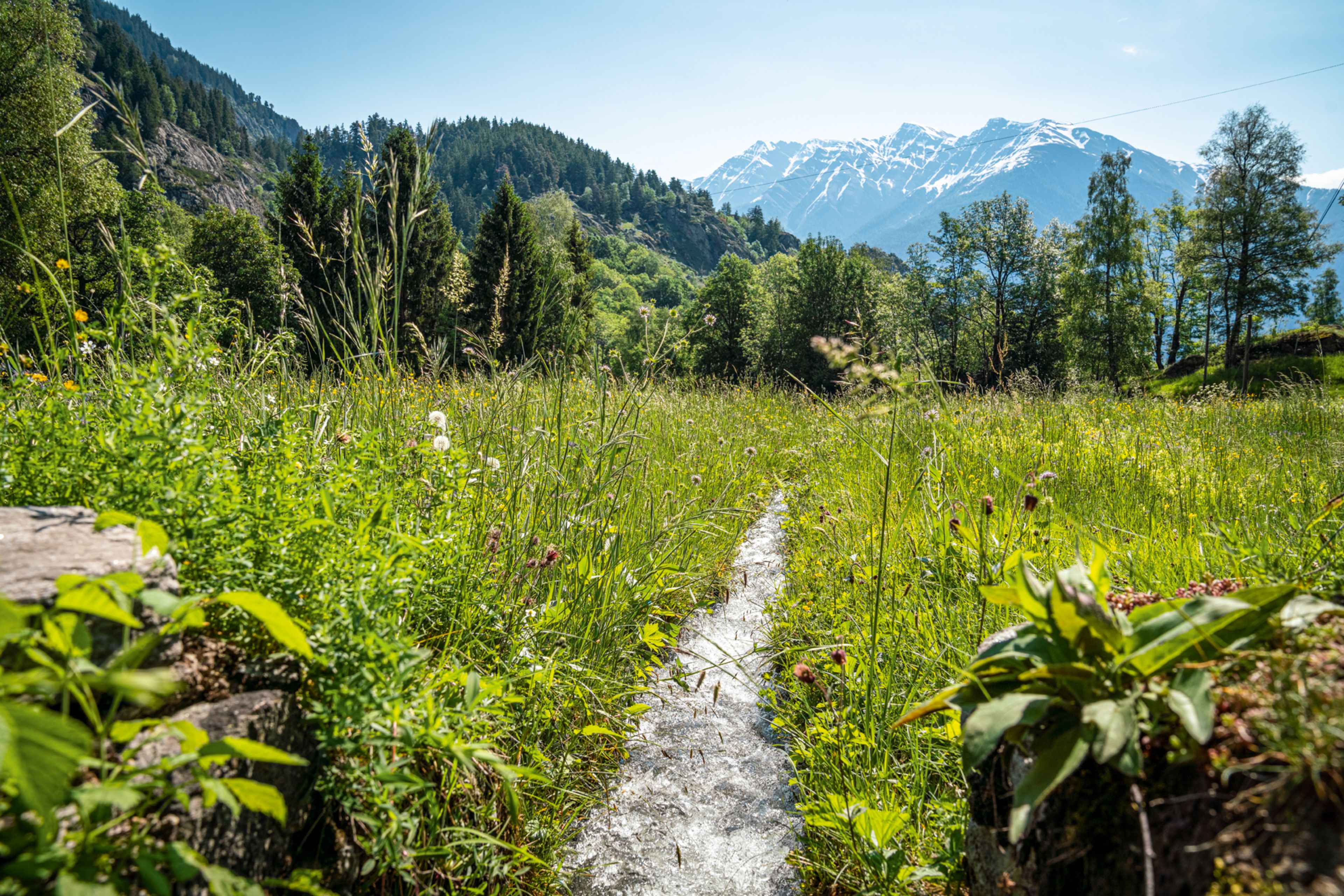A valuable heritage
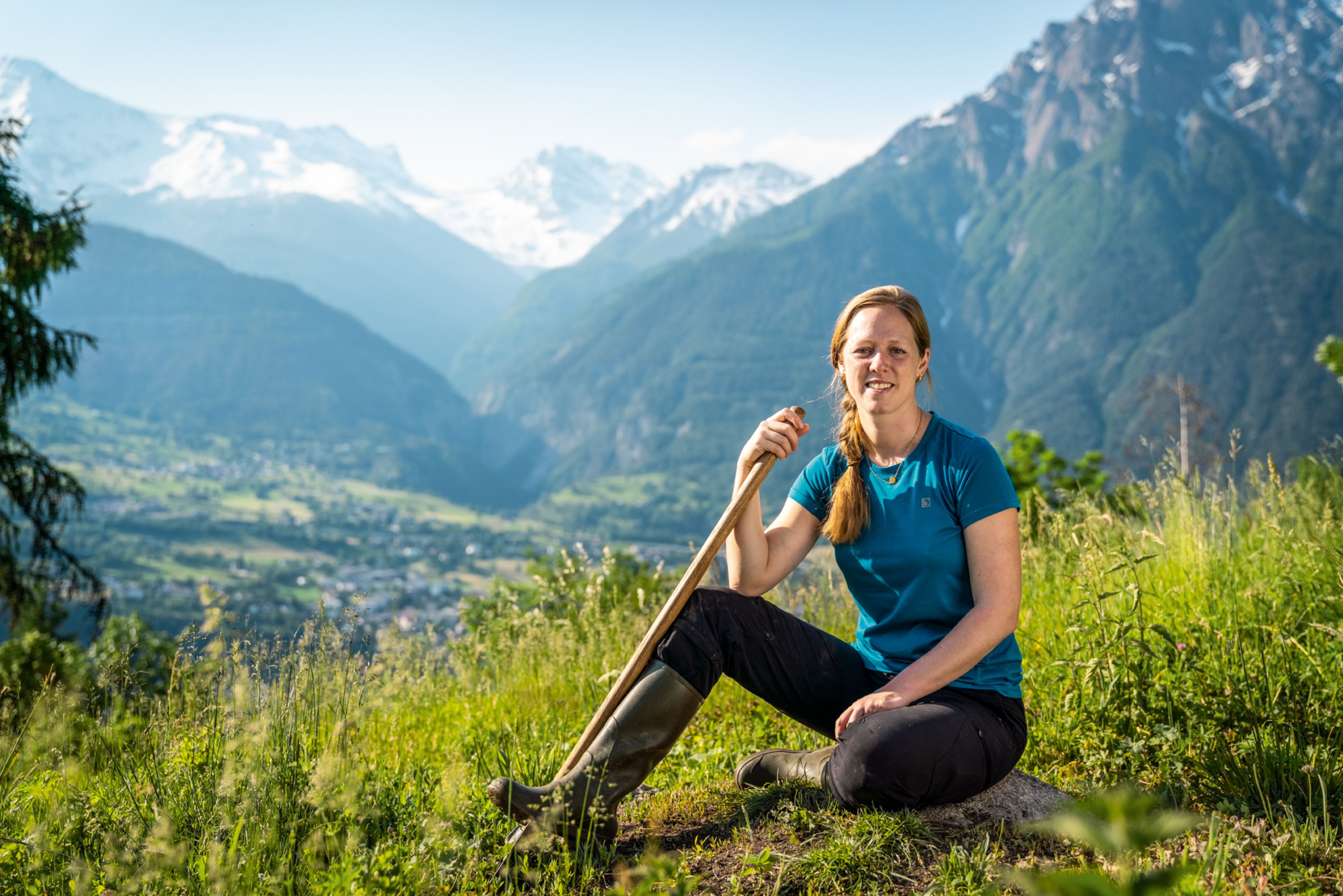
Valais summers are hot and dry! Farmers in the region have constructed spectacular irrigation channels over the years to ensure a sufficient supply of water for their meadows and animals.
These channels transport the precious commodity from the mountains to the mountain villages. Once there, the water is distributed using conventional irrigation methods. Organic farmer Franziska Schmid has learnt these methods herself, preserving this valuable cultural heritage for the next generation.
Landscape of the Year 2020
The irrigation landscapes of the sunny mountains known as the Sonnenberge (Naters, Ausserberg, Eggerberg and Baltschieder) in Upper Valais are unique cultural landscapes that have emerged over centuries thanks to conventional irrigation and agricultural methods. This valuable cultural heritage has now been selected by the Swiss Foundation for Landscape Conservation as Landscape of the Year 2020.
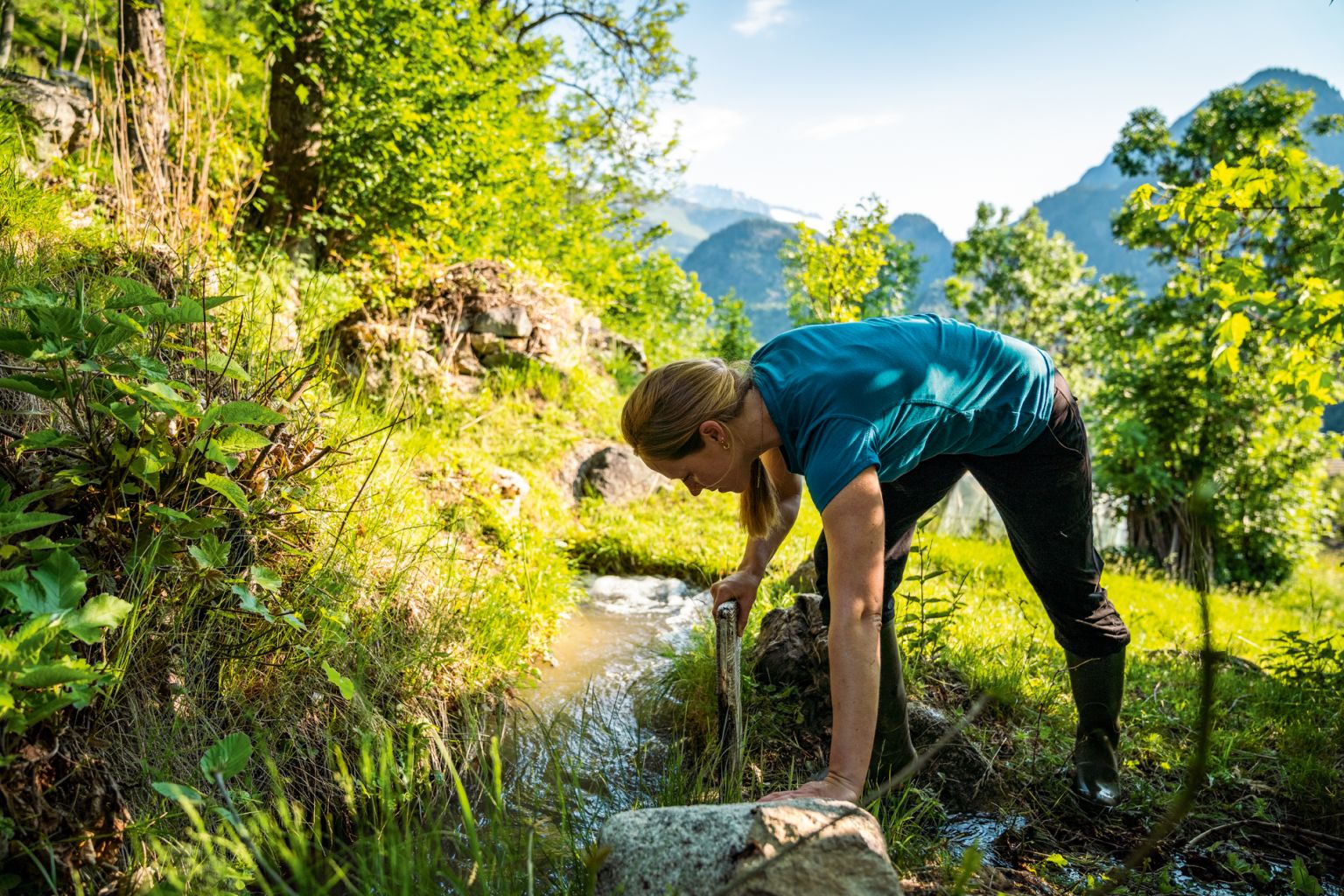
Hobby farmer
A qualified part-time farmer and physiotherapy student, Franziska Schmid is gradually taking over the organic farm belonging to her father, Martin. Looking after the Valais Blackneck goats and Blacknose sheep is her passion.
Spectacular irrigation channels
The very existence of Valais’s farming community depends on precious water being channelled in from the snow-laden mountains to the arid slopes above the Rhône Valley. Over the years, locals have constructed spectacular irrigation channels known as “bisses” to enable water to be channelled in this way. A total of four bisses supply the water needed to irrigate Franziska and Martin Schmid’s 20-hectare farm. Known as “Oberschta”, “Obere Flüöjeri”, “Stockeri” and “Haslerwasser”, these bisses are fed by the Gredetsch and Chelch streams originating from the Gredetsch and Unnerbäch glaciers in a feat of engineering that sees the precious water flow from the glaciers down into the valley.
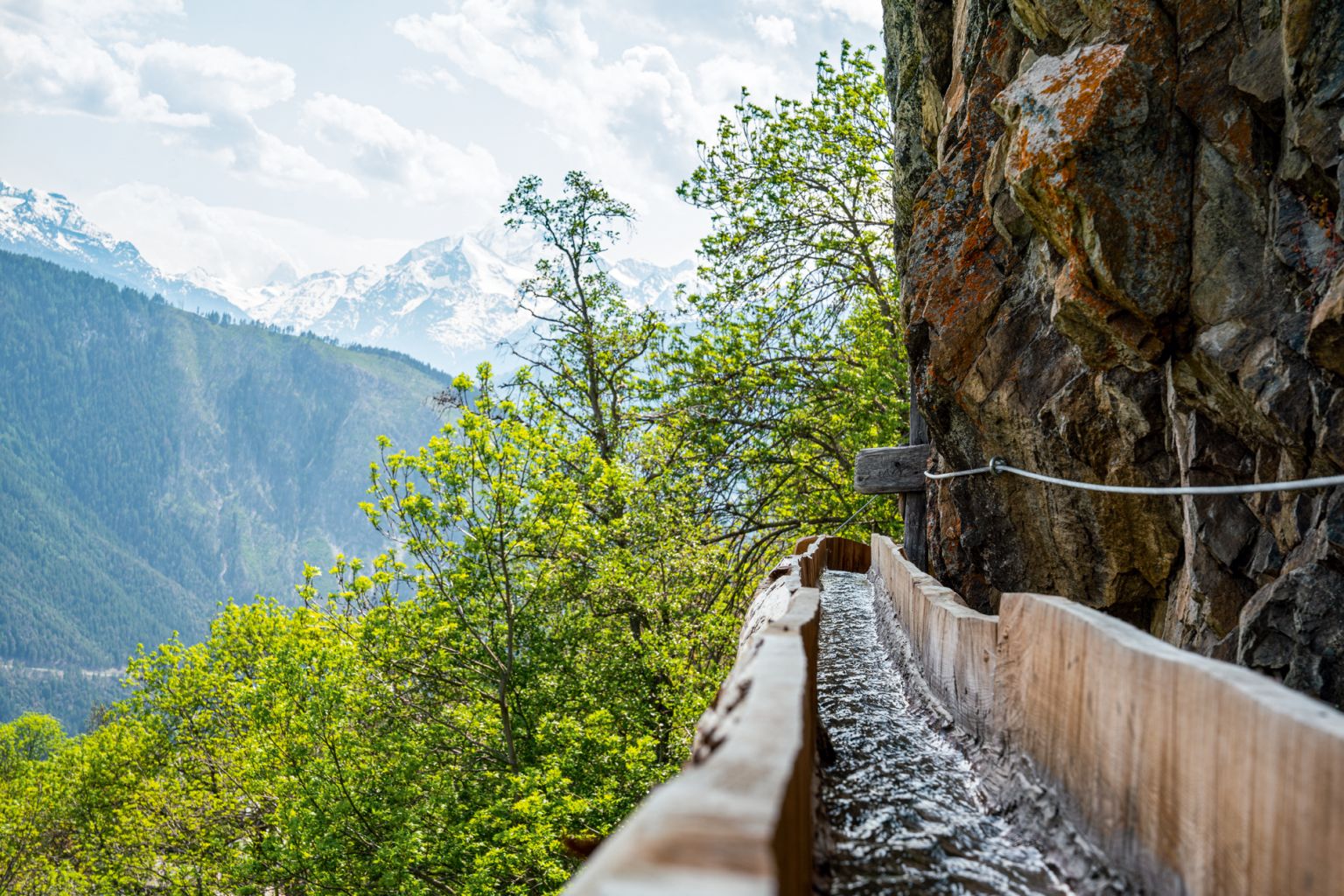
Tip: Discover the landscapes on foot
You can discover these irrigation channels and impressive landscapes yourself by simply following alongside the channels. There are a whole host of bisse hiking trails to choose from in Valais. One spectacular but challenging mountain and bisse trail takes hikers to the Baltschiedertal Valley and back to Ausserberg.
Spring cleaning
The two bisses known as “Obere Flüöjeri” and “Stockeri” are at their fullest between mid-May and the end of September. A major clean-up operation (known locally as Schortag) takes place each spring to ensure the water can flow unimpeded through the 1.2km and 2.6km-long bisses. Everyone who uses the water pitches in to help. A total of 10 groups working on the “Obere Flüöjeri” and 20 on the “Stockeri” remove sand, stones and branches that have collected in the bisses over the winter and carry out repairs where necessary.
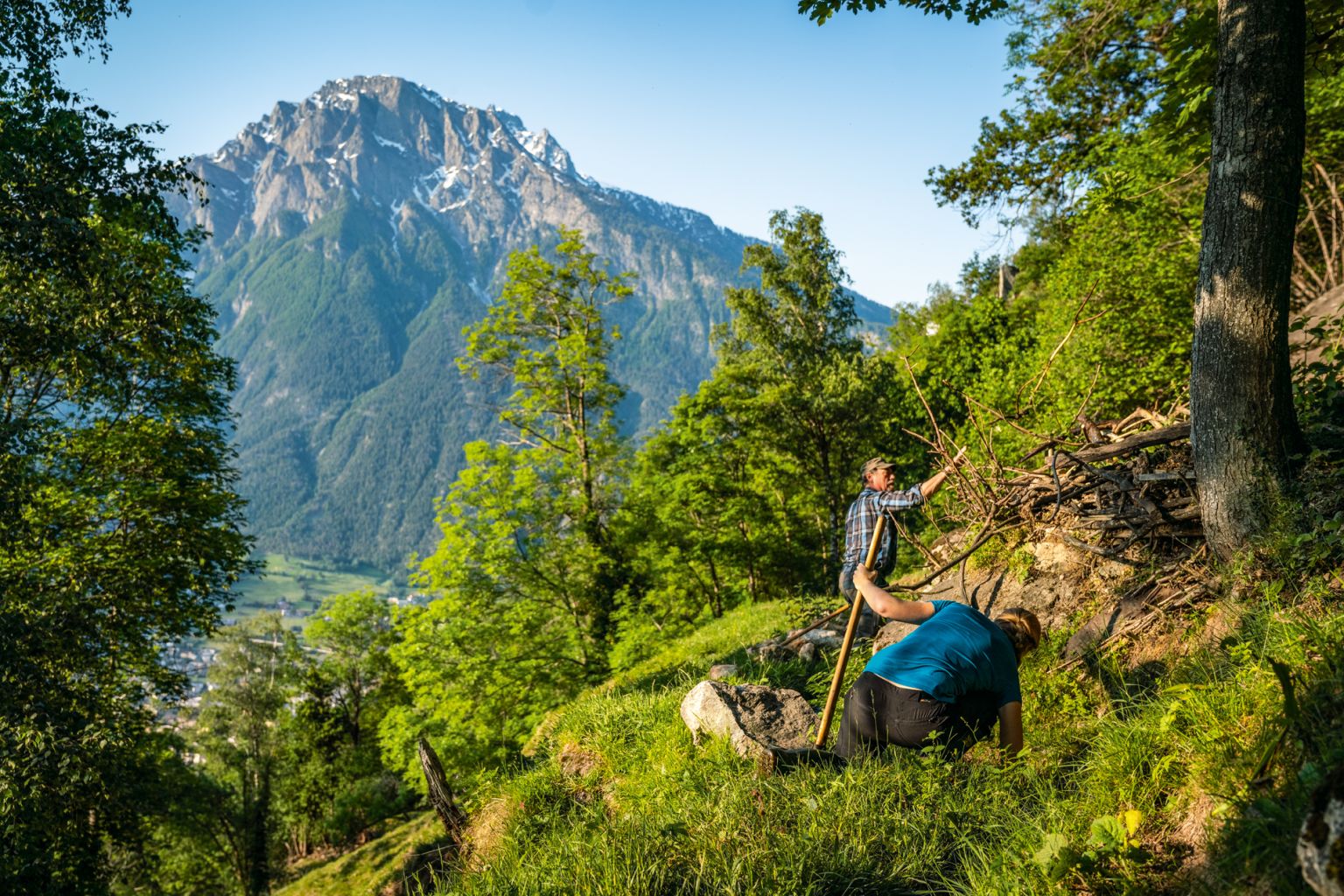
Conventional irrigation
Following the spring clean, the land is irrigated day and night right through until autumn. A written schedule governing who is entitled to use the water at what times and for how long has existed for as long as anyone can remember. “When it’s hot, we need lots of water and use every second of our allotted irrigation hours. Sometimes we start irrigating at 3 a.m. during these periods.” The number of allotted irrigation hours depends on the size of the plot of land. After a certain number of days, or when all meadows surrounding a bisse have been irrigated, the whole process starts again from scratch. This is known as “Wasserkehr”, or turn of the water. For the “Stockeri”, this cycle lasts exactly 14 days. “I make a clear note on my calendar of my allotted days and times to ensure I don’t miss any valuable irrigation hours”, explains Franziska Schmid. The price charged for the water varies from bisse to bisse. Water from the Stockeri costs CHF 5 per irrigation hour per year. At the right time, Franziska dams the water in the bisse using the water plate and then opens the gate to allow the precious water to flow through a network of narrow channels into the meadows. She uses a water axe to control the flow of the water. “I try to guide it but sometimes it just flows where it wants to”, recounts Franziska, adding with a chuckle: “Once I accidentally released too much water and flooded my neighbour’s garden. But now I’ve got the hang of it, the whole irrigation process runs smoothly.”
An important and necessary tradition
Farming is a backbreaking profession, and irrigating the land is just one more thing to add to farmers’ already long list of jobs. “It’s very hard work but it needs to be done. The water needs to be channelled down to our steep slopes, otherwise we wouldn’t be able to cultivate our land. Everything would become arid and barren and that would be a crying shame because I love my home”, explains Franziska. She took a conscious decision to carry on the tradition of conventional irrigation, in spite of it being much more physically demanding and time intensive than the modern sprinkler method. Franziska owes this to her father, who taught her the skills she needed to continue the tradition. This knowledge has been passed down verbally from generation to generation for as long as anyone can remember. “It’s all down to my father that I have been able to continue this valuable heritage.”
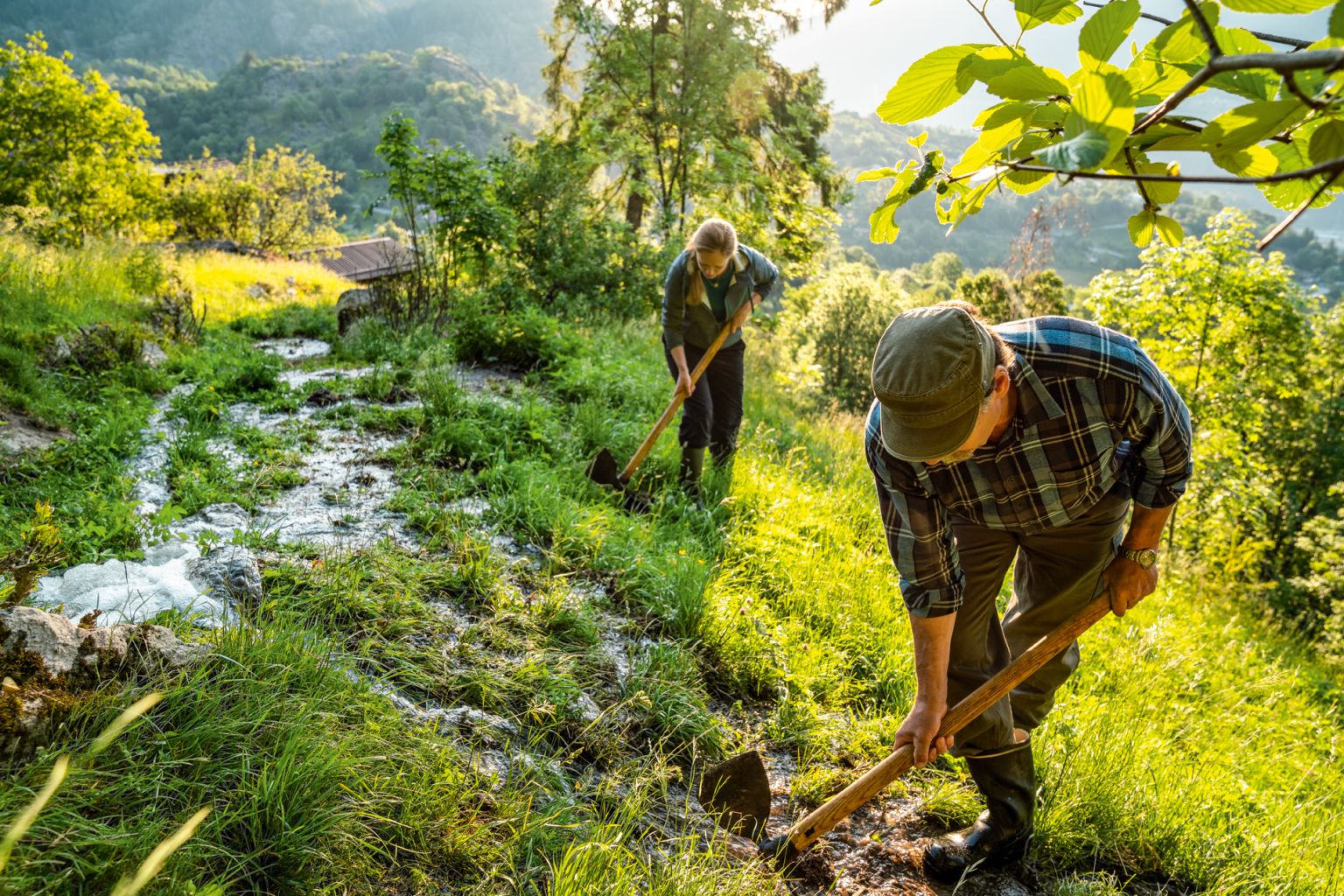
What do bisses do? They...
... transport precious irrigation water down to the mountain villages ... enable landscapes to flourish and increase the variety of crops that can be grown ... supply meadows with valuable minerals ... fill reservoirs and provide water to help fight fires ... transport water down into the valley in an orderly manner and protect against flooding ... irrigate the mountain forests and stabilise the slopes ... are important pieces of cultural history and a valuable cultural heritage ... provide an attractive hiking landscape for visitors
Source : myswitzerland.com
Published : May 2020
A smile in heaven for mountain bikers
Next story
